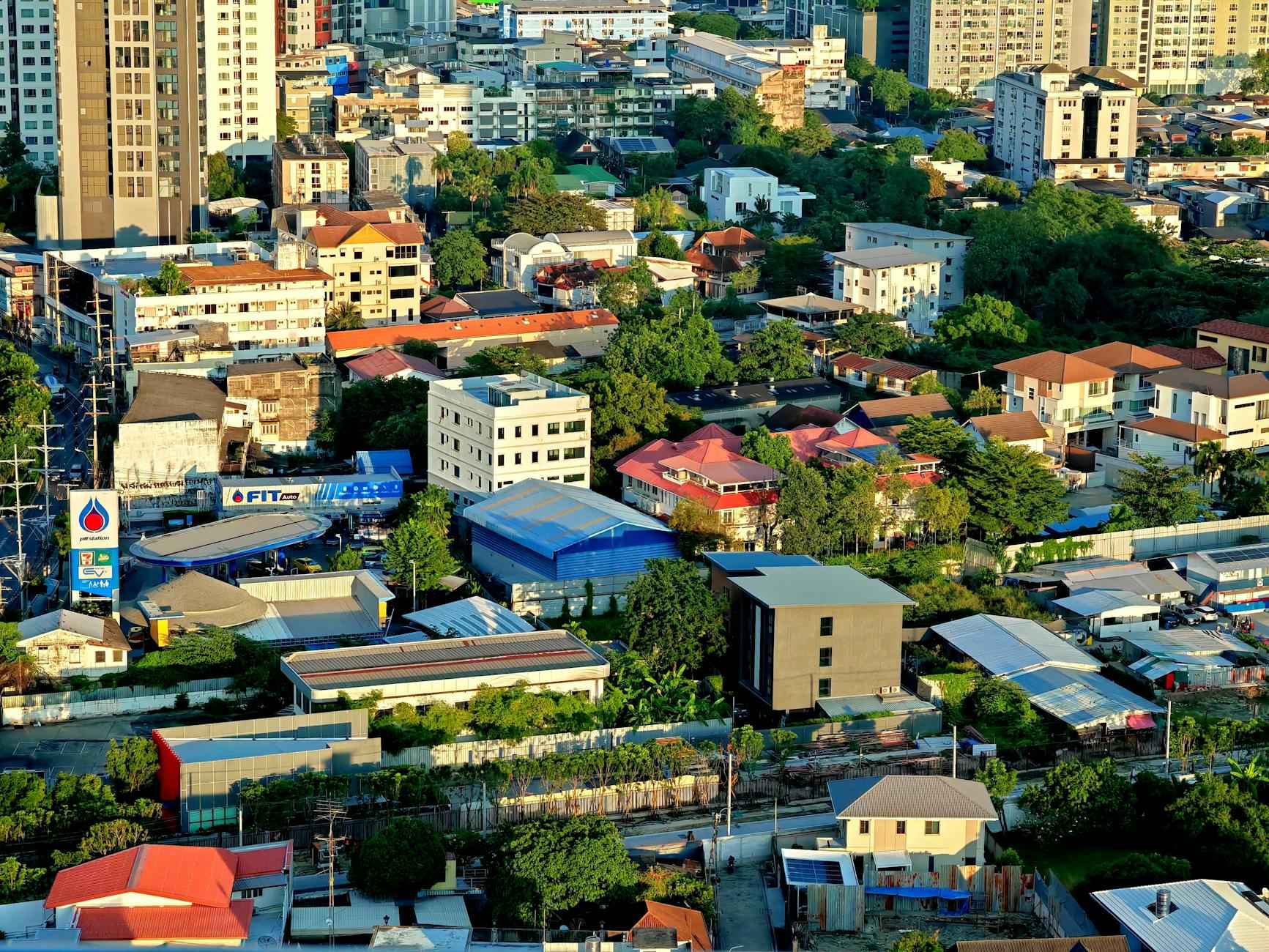New York City is a melting pot of cultures, and among the most vibrant is the Indian community. As you explore this bustling metropolis, you’ll find a rich array of Indian goods, from aromatic spices to exquisite textiles. This guide will lead you through the best shopping spots and provide essential tips to enhance your experience.
Understanding Indian Spices
Indian cuisine is celebrated for its complex flavors, largely due to its diverse spices. Familiarizing yourself with these spices not only enriches your cooking but also makes your shopping experience in New York more enjoyable. Common spices include cumin, turmeric, cardamom, and coriander, each offering unique tastes and health benefits. For instance, turmeric is known for its anti-inflammatory properties, while cumin aids digestion.
Where to Find Authentic Indian Spices in NYC
New York City is home to numerous markets and specialty stores that cater to Indian cuisine. Some of the best places to find authentic spices include:
- Patel Brothers: This prominent grocery chain offers a vast selection of spices and ingredients essential for Indian cooking.
- Apna Bazar: A popular spot for Indian snacks and groceries, Apna Bazar is ideal for stocking your kitchen with authentic flavors.
- Kalustyan’s: Known for its extensive spice section, this store provides a wide range of Indian spices alongside international options.
Exploring Indian Textiles
Indian textiles are a feast for the eyes, known for their vibrant colors and intricate designs. Understanding the types of textiles available will greatly enhance your shopping experience. Common fabrics include silk, cotton, and wool, each with unique characteristics. For example, silk is luxurious and perfect for formal occasions, while cotton is breathable and ideal for everyday wear.
Best Places to Buy Indian Textiles in NYC
When it comes to purchasing Indian textiles, New York offers a plethora of options:
- Indian Fabric Stores: These shops specialize in Indian fabrics, providing a range of options from traditional sarees to contemporary designs.
- Artisan Markets: Markets like the Brooklyn Flea feature handmade textiles from local artisans, showcasing the craftsmanship of Indian textiles.
- Little India: Located in Jackson Heights, this area is filled with shops that cater to all your textile needs, from fabrics to ready-made garments.
Tips for Shopping Indian Goods in NYC
Shopping for Indian goods can be overwhelming, but these tips will help you navigate the markets:
- Know Your Needs: Before shopping, identify what you need—be it spices, textiles, or other items. This will streamline your experience.
- Ask for Recommendations: Don’t hesitate to ask store owners or fellow shoppers for recommendations. Locals often have valuable insights into the best products.
- Compare Prices: Take the time to compare prices across different stores to understand the market better.
Understanding Pricing and Quality
Pricing for Indian goods can vary widely. Understanding what to expect in terms of quality and cost will help you make informed choices. When shopping for spices or textiles, look for authentic labels, feel the fabric, and check expiration dates on spices. Quality matters, and investing in high-quality products will enhance your culinary and fashion experiences.
Shopping for Indian goods in New York is not just about purchasing items; it’s about immersing yourself in a rich culture. With the right knowledge and tips, you can discover the best spices and textiles that the city has to offer, enriching your home and kitchen with authentic Indian flavors and vibrant fabrics.

Understanding Indian Spices
Indian cuisine is celebrated worldwide for its richness and diversity, largely attributed to its extensive use of spices. These spices not only add flavor but also enhance the nutritional value of dishes. In this section, we will delve into the various spices that are integral to Indian cooking, their health benefits, and how they can elevate your culinary experience in New York.
To truly appreciate Indian spices, it’s essential to understand their origins and uses. Spices like cumin, coriander, and turmeric are staples in many Indian kitchens. Each spice has its unique flavor profile and health benefits. For instance, turmeric is renowned for its anti-inflammatory properties, while cumin aids in digestion.
When exploring Indian spices, you may come across whole spices and ground spices. Whole spices, such as cardamom pods and cinnamon sticks, release their flavors more slowly and are often used in cooking to infuse dishes over time. On the other hand, ground spices, like chili powder and garam masala, provide an instant burst of flavor and are typically added towards the end of the cooking process.
- Cumin: Often used in Indian curries and spice blends, cumin has a warm, earthy flavor that enhances dishes.
- Coriander: This spice, derived from the seeds of the cilantro plant, adds a citrusy note to various dishes and is commonly used in chutneys.
- Turmeric: Known for its vibrant yellow color, turmeric is a key ingredient in curry powders and is praised for its health benefits.
- Mustard Seeds: These seeds are essential in South Indian cooking, where they are often tempered in oil to release their flavor.
- Fenugreek: With a slightly bitter taste, fenugreek leaves and seeds are used in many Indian dishes, providing a unique flavor.
Incorporating these spices into your cooking can significantly enhance your dishes. For instance, a simple vegetable stir-fry can transform into an aromatic delight with the addition of cumin and coriander. Additionally, understanding how to balance spices is crucial; too much of one spice can overpower a dish, while too little can leave it bland.
When shopping for Indian spices in New York, look for stores that offer fresh spices, as their potency diminishes over time. Many Indian grocery stores carry a wide selection of spices, often at reasonable prices. Don’t hesitate to ask store owners for recommendations on the best spices for specific dishes.
Lastly, consider experimenting with spice blends such as garam masala or curry powder. These blends are convenient and provide a well-rounded flavor profile, making them ideal for quick meals. By familiarizing yourself with the various spices and their uses, you can enhance your cooking skills and bring authentic Indian flavors to your kitchen.
Where to Find Authentic Indian Spices in NYC
New York City is a melting pot of cultures, and its culinary offerings reflect this diversity, especially when it comes to Indian cuisine. For anyone looking to explore the rich tapestry of flavors that Indian cooking has to offer, knowing where to find authentic Indian spices is essential. This guide will help you navigate the best markets and specialty stores in NYC to elevate your cooking with genuine Indian spices.
- Patel Brothers: This renowned grocery chain is a staple for Indian cooking enthusiasts. With locations throughout the city, Patel Brothers offers an extensive selection of spices, lentils, and other essential ingredients. You can find everything from turmeric to cumin, ensuring that your pantry is stocked with the authentic flavors of India.
- Apna Bazar: Known for its vibrant atmosphere, Apna Bazar is another excellent stop for those seeking Indian spices. This grocery store not only provides a wide range of spices but also features various snacks and groceries that are integral to Indian cuisine. Whether you’re searching for chili powder or garam masala, Apna Bazar has you covered.
- Kalustyan’s: Located in the heart of Manhattan, Kalustyan’s is a specialty store that offers a vast array of spices from around the world, with a significant focus on Indian spices. This store is particularly known for its high-quality products and knowledgeable staff who can guide you in selecting the right spices for your dishes.
- Indian Grocery Store: This smaller, family-owned shop provides a cozy atmosphere where you can find a variety of authentic Indian spices. It’s a great place to ask questions and get recommendations on how to use different spices in your cooking.
Specialty Spice Shops
In addition to grocery stores, NYC is home to specialty spice shops that focus solely on spices. These shops often provide high-quality products and expert advice, making them a valuable resource for both novice cooks and seasoned chefs.
- Spice House: This shop prides itself on offering fresh, high-quality spices. The knowledgeable staff can help you understand the flavor profiles of various spices, ensuring that you select the best ones for your culinary creations.
- Whole Foods Market: While not exclusively an Indian grocery store, Whole Foods has a great selection of organic spices, including many commonly used in Indian cooking. Their bulk spice section allows you to purchase just the amount you need.
Online Resources
If you prefer the convenience of shopping from home, several online retailers specialize in Indian spices. Websites like Amazon and iSpice offer a wide range of spices that can be delivered right to your door. This option is particularly useful for hard-to-find spices or bulk purchases.
By exploring these various markets and specialty stores, you can easily find authentic Indian spices that will enhance your cooking and bring the flavors of India right into your kitchen. Whether you’re preparing a traditional curry or experimenting with new recipes, having the right spices on hand is crucial for achieving that authentic taste.
Top Indian Grocery Stores
New York City is a melting pot of cultures, and its grocery stores reflect this diversity, especially when it comes to Indian products. For those looking to explore the rich flavors of Indian cuisine, several grocery stores specialize in authentic Indian ingredients. These stores not only provide essential spices and lentils but also a wide variety of other products that cater to the culinary needs of the Indian community and enthusiasts alike.
One of the most recognized names in the Indian grocery scene is Patel Brothers. With multiple locations across the city, this grocery chain has become a staple for many. Patel Brothers offers an extensive selection of spices, ranging from turmeric and cumin to less common varieties like asafoetida and black mustard seeds. Their shelves are stocked with various lentils, beans, and rice, making it easy to find everything needed for a traditional Indian meal. Additionally, they carry ready-to-eat meals, snacks, and frozen foods that are perfect for those busy weeknights.
Another popular option is Apna Bazar, which prides itself on providing a diverse array of Indian groceries. This store is known for its friendly staff and welcoming atmosphere. Customers can find not only spices and lentils but also a range of Indian snacks, sweets, and beverages. The store often features seasonal items, ensuring that shoppers can find ingredients for festive occasions and traditional recipes. Apna Bazar also offers fresh produce, including Indian vegetables like bitter gourd and drumsticks, which are essential for authentic Indian cooking.
For those seeking a more specialized selection, Kalustyan’s is a must-visit. This gourmet grocery store is renowned for its vast collection of spices from around the world, including a significant focus on Indian spices. Kalustyan’s is particularly famous for its high-quality saffron and unique spice blends. The knowledgeable staff is always on hand to provide recommendations and guidance on how to use various spices, making it an excellent destination for both novice cooks and seasoned chefs.
Another noteworthy mention is Subzi Mandi, which is particularly popular for its fresh produce and bulk spices. Located in various neighborhoods, this grocery store caters to a diverse clientele. The vibrant atmosphere and the smell of fresh spices create an immersive shopping experience. Customers can explore a wide range of lentils, beans, and other staples, along with a selection of frozen goods that include Indian bread and snacks.
In addition to these grocery stores, Indian Grocery Store is an online platform that allows customers to order their favorite Indian products from the comfort of their homes. They offer delivery services throughout NYC, making it convenient for those who may not have easy access to physical stores. This option is particularly beneficial for busy individuals or families who want to stock up on essential items without the hassle of navigating busy streets.
Overall, the grocery stores in NYC that specialize in Indian products offer a treasure trove of ingredients essential for creating authentic Indian dishes. From spices and lentils to snacks and beverages, these stores provide everything needed to explore the rich culinary traditions of India. Whether you’re a seasoned cook or just beginning your culinary journey, visiting these grocery stores will undoubtedly enhance your cooking experience.
Patel Brothers
Patel Brothers is a well-known name in the Indian grocery market across the United States, and it stands out as one of the largest Indian grocery chains in the country. With numerous locations, especially in metropolitan areas, this store has become a staple for those seeking authentic Indian ingredients. The extensive selection of products available at Patel Brothers makes it a go-to destination for both seasoned chefs and home cooks alike.
- Vast Selection of Spices: At Patel Brothers, you will find an impressive array of spices that are essential for creating authentic Indian dishes. From cumin and coriander to turmeric and garam masala, the variety is extensive. Each spice is sourced to ensure quality, allowing customers to recreate traditional recipes with ease.
- Variety of Ingredients: Beyond spices, Patel Brothers offers a wide range of ingredients, including lentils, rice, and flours that are staples in Indian cooking. Whether you are looking for basmati rice or chickpea flour, you are likely to find what you need here.
- Ready-to-Cook Options: For those who may not have the time to prepare meals from scratch, Patel Brothers provides a selection of ready-to-cook options. These products allow customers to enjoy the flavors of Indian cuisine without extensive preparation.
- Snacks and Sweets: In addition to cooking ingredients, Patel Brothers carries a variety of Indian snacks and sweets. From namkeen to gulab jamun, these items are perfect for those looking to indulge in traditional Indian flavors.
Shopping Experience
Visiting Patel Brothers is not just about purchasing groceries; it’s an experience in itself. The stores are designed to evoke a sense of community and culture, often featuring vibrant displays and an inviting atmosphere. Customers can explore aisles filled with colorful packaging and enticing aromas, making the shopping experience enjoyable and engaging.
The staff at Patel Brothers are typically knowledgeable and ready to assist shoppers in finding specific items or recommending products. This personal touch enhances the overall experience and helps customers feel more connected to the food they are purchasing.
Online Shopping
In addition to their physical stores, Patel Brothers has embraced the digital age by offering online shopping options. Customers can browse through their extensive inventory on the website, making it convenient to shop from home. This service is particularly beneficial for those who may not live near a physical location or for those who prefer the ease of online shopping.
The online platform also provides detailed descriptions of products, allowing consumers to make informed decisions. Additionally, regular promotions and discounts can be found online, making it an attractive option for budget-conscious shoppers.
Community Engagement
Patel Brothers is more than just a grocery store; it serves as a hub for the Indian community in the U.S. The chain often hosts events, cooking classes, and cultural celebrations that allow customers to engage with Indian culture and cuisine. These activities not only promote the store but also foster a sense of belonging among community members.
In conclusion, Patel Brothers plays a significant role in making Indian cuisine accessible to a broader audience. With its extensive selection of spices and ingredients, welcoming shopping environment, and commitment to community engagement, it stands out as a premier destination for anyone looking to explore the rich flavors of Indian cooking.
Apna Bazar
Apna Bazar: Your Gateway to Authentic Indian FlavorsWhen it comes to sourcing authentic Indian ingredients in New York City, stands out as a premier destination. This bustling grocery store is not just a place to shop; it is a cultural hub that brings the essence of India right to your kitchen. With an extensive selection of spices, snacks, and groceries, Apna Bazar caters to both seasoned chefs and those just beginning to explore the world of Indian cuisine.
Apna Bazar differentiates itself from other grocery stores through its commitment to quality and authenticity. The store prides itself on offering a wide variety of Indian spices sourced directly from trusted suppliers. From cumin to turmeric, each spice is carefully selected to ensure that customers receive the best possible products. This attention to detail extends to their snacks, which include popular items like namkeen and papad, providing a taste of home for many Indian expatriates.
One of the most compelling reasons to shop at Apna Bazar is the diversity of products available. The store boasts a comprehensive selection of lentils, rice, and other staples that are essential for preparing traditional Indian dishes. Additionally, Apna Bazar carries a range of vegetarian and vegan options, making it an inclusive shopping destination for all dietary preferences.
As you walk through the spice aisle at Apna Bazar, you will be greeted by vibrant colors and enticing aromas. The store offers both whole spices and pre-ground options, allowing you to choose based on your cooking style. Masalas, such as garam masala and chaat masala, are also available, providing a convenient way to add authentic flavors to your dishes without the hassle of mixing individual spices.
In addition to spices, Apna Bazar features an impressive array of Indian snacks and sweets. Whether you are in the mood for savory treats or sweet delights, you will find something to satisfy your cravings. From kaju katli to bhujia, these snacks are perfect for sharing with friends or enjoying during a quiet evening at home.
Shopping at Apna Bazar is not just about purchasing groceries; it is an experience. The friendly staff is always ready to assist you in finding what you need and can offer recommendations based on your culinary interests. The store often hosts events and cooking demonstrations, which provide an opportunity to learn more about Indian cooking techniques and recipes.
In summary, Apna Bazar is more than just a grocery store; it is a vibrant community hub that celebrates Indian culture through food. Whether you are looking to stock your pantry with essential spices or indulge in delightful snacks, Apna Bazar has something for everyone. For anyone seeking to explore the rich flavors of Indian cuisine in New York City, a visit to Apna Bazar is a must.
Specialty Spice Shops
are a treasure trove for culinary enthusiasts and anyone interested in the rich flavors of Indian cuisine. In New York City, these shops specialize in a variety of spices, herbs, and blends that are essential for authentic Indian cooking. Unlike regular grocery stores, specialty spice shops offer an extensive range of products, often sourced from around the world, ensuring quality and authenticity. This article will delve into the unique features of these shops, what to expect, and how to make the most of your visit.
When it comes to spices, quality is paramount. Specialty spice shops focus on providing high-quality products that are often fresher and more flavorful than those found in larger grocery chains. These shops typically feature a wide array of spices, including rare and hard-to-find varieties. Moreover, the knowledgeable staff in these stores can offer invaluable advice on how to use different spices, helping you to enhance your culinary skills.
- Expert Staff: Many specialty spice shops employ staff who are passionate about food and spices. They can provide recommendations based on your cooking needs and preferences.
- Unique Offerings: These shops often carry specialty blends and regional spices that you might not find elsewhere, such as garam masala, chaat masala, and various regional curry powders.
- Sampling Opportunities: Some shops allow you to sample spices before purchasing, which can be a great way to discover new flavors.
- Educational Resources: Many specialty spice shops also offer recipes, cooking classes, or workshops to help you learn more about using spices effectively.
New York City is home to several renowned specialty spice shops. Here are a few that stand out:
- Kalustyan’s: Located in the heart of Manhattan, Kalustyan’s is a well-known destination for spices, herbs, and specialty ingredients from around the world. The store features an impressive selection of Indian spices, along with a variety of international products.
- Spice Corner: This charming shop in Queens offers a wide range of Indian spices, lentils, and organic products. The staff is friendly and knowledgeable, making it a great place for both novice and experienced cooks.
- Indian Grocery Store: Situated in various locations across NYC, these stores focus on Indian products, including a diverse selection of spices. They often provide bulk options, allowing you to purchase just the right amount for your cooking needs.
To make the most of your visit to specialty spice shops, consider the following tips:
- Ask Questions: Don’t hesitate to ask the staff for recommendations or information about the spices you are interested in. They can guide you on how to use specific spices and suggest complementary ingredients.
- Take Your Time: Specialty spice shops can be overwhelming due to the vast selection available. Take your time to explore and read labels to understand what you are purchasing.
- Keep an Open Mind: Be open to trying new spices and blends that you may not be familiar with. You might discover a new favorite that enhances your cooking.
In conclusion, specialty spice shops in NYC offer a unique shopping experience that goes beyond just purchasing ingredients. They provide an opportunity to connect with the rich culinary traditions of Indian cuisine and elevate your cooking skills. Whether you are a seasoned chef or a home cook, these shops are worth exploring for their quality products and expert advice.
Exploring Indian Textiles
Indian textiles are a vibrant tapestry of culture, history, and artistry. Renowned for their rich colors and intricate designs, these fabrics reflect the diverse traditions of the country. When you delve into the world of Indian textiles, you will discover a plethora of options that not only enhance your wardrobe but also add a touch of elegance to your home. Understanding the various types of textiles available will significantly enhance your shopping experience in New York.
Types of Indian Fabrics
- Silk: One of the most luxurious fabrics, Indian silk is known for its sheen and texture. Varieties like Banarasi, Kanjivaram, and Tussar are famous for their exquisite weaving techniques and intricate motifs.
- Cotton: Lightweight and breathable, cotton is ideal for everyday wear. Indian cotton fabrics, such as Khadi and Mangalagiri, are celebrated for their comfort and versatility.
- Wool: In regions like Kashmir, woolen textiles are crafted into warm shawls and wraps. Pashmina is a type of fine cashmere wool that is highly sought after for its softness and warmth.
- Linen: Known for its durability and natural luster, linen is a great option for summer wear. Indian linen often features beautiful prints and patterns.
Handcrafted vs. Machine-Made Textiles
When shopping for Indian textiles, it is essential to understand the difference between handcrafted and machine-made fabrics. Handcrafted textiles are produced using traditional methods that often involve intricate handwork, making each piece unique. For instance, block printing and handloom weaving are techniques that showcase the skill of artisans. These textiles not only support local craftsmanship but also carry a story of their origin.
On the other hand, machine-made textiles are typically more affordable and uniform in quality. While they may lack the personal touch of handcrafted items, they are often more accessible for everyday use. Understanding these differences will help you choose textiles that resonate with your personal style and values.
Best Places to Buy Indian Textiles in NYC
New York City is a treasure trove for those seeking authentic Indian textiles. From vibrant boutiques to bustling markets, you can find a wide array of options:
- Indian Fabric Stores: Stores like Chandni Boutique and Karma Boutique specialize in Indian fabrics, offering everything from sarees to contemporary clothing.
- Artisan Markets: Explore markets such as Jackson Heights and Little India, where you can find handmade textiles directly from artisans, ensuring authenticity and quality.
Tips for Shopping Indian Textiles
When shopping for Indian textiles, consider the following tips to enhance your experience:
- Know Your Needs: Determine the type of fabric you are looking for, whether it’s for clothing, home decor, or gifts.
- Ask for Recommendations: Engage with store owners and fellow shoppers to discover hidden gems and best-selling items.
- Assess Quality: Feel the fabric and inspect the stitching to ensure you are purchasing high-quality textiles.
In summary, exploring Indian textiles in New York offers an enriching experience. By understanding the types of fabrics available and knowing where to shop, you can find beautiful pieces that reflect the artistry and culture of India.
Types of Indian Fabrics
When it comes to Indian textiles, the diversity is nothing short of remarkable. From the luxurious sheen of silk to the breathable comfort of cotton, each fabric tells a story of its own. Understanding the various types of Indian fabrics not only enhances your shopping experience but also allows you to appreciate the craftsmanship behind each piece.
- Silk: Known for its luxurious texture and vibrant colors, silk is one of the most celebrated fabrics in India. It is often used in sarees, ties, and formal wear. The silk-producing regions like Varanasi, Mysore, and Kanchipuram are famous for their unique weaving techniques, resulting in exquisite patterns and designs.
- Cotton: As a staple in Indian households, cotton is favored for its breathability and comfort. It is perfect for casual wear, especially in the hot and humid climate of India. The fabric comes in various patterns, from simple block prints to intricate embroidery, making it versatile for different occasions.
- Wool: Primarily used in the northern regions of India, wool fabrics are known for their warmth and durability. The traditional shawls from Kashmir, like Pashmina, are highly sought after for their softness and intricate designs. Wool is ideal for winter wear, providing both style and comfort.
- Linen: Gaining popularity in recent years, linen is appreciated for its lightweight and breathable nature. It is often used for summer clothing and home textiles. The fabric has a natural luster and is known for its ability to keep the body cool in warm weather.
- Georgette: This lightweight, flowing fabric is often used in formal wear and evening gowns. Georgette is made from silk or polyester and is known for its sheer quality and subtle drape. It is a popular choice for sarees and dresses, adding a touch of elegance to any outfit.
- Chiffon: Similar to georgette, chiffon is a lightweight fabric that is often used in evening wear and sarees. Its sheer appearance and delicate texture make it a favorite among designers. Chiffon can be layered for added volume and is often adorned with embellishments.
- Khadi: This hand-spun and hand-woven fabric symbolizes India’s rich heritage and is often associated with Mahatma Gandhi’s movement for self-reliance. Khadi is made from cotton, silk, or wool and is known for its eco-friendly properties. It has gained popularity as a sustainable fabric choice.
Each of these fabrics serves a unique purpose and is suitable for various occasions. Whether you are looking for something formal, casual, or traditional, understanding the types of Indian fabrics will help you make informed choices when shopping. The rich history and cultural significance behind each fabric add to their allure, making them more than just materials but a representation of Indian heritage.
In conclusion, exploring the world of Indian fabrics is a journey through tradition, craftsmanship, and style. From the luxurious feel of silk to the casual comfort of cotton, there is a fabric for every taste and occasion. When shopping for Indian textiles, consider the type of fabric that best suits your needs and style preferences. Each piece is not just clothing but a narrative woven into the fabric of India.
Handcrafted vs. Machine-Made Textiles
When it comes to Indian textiles, understanding the distinction between handcrafted and machine-made fabrics is crucial for making informed purchasing decisions. Each type of textile has its own unique characteristics, advantages, and cultural significance. This knowledge not only enhances your shopping experience but also allows you to appreciate the craftsmanship and artistry involved in creating these beautiful fabrics.
Handcrafted textiles are made using traditional techniques that often involve manual labor and artisanal skills. These fabrics are typically produced by skilled artisans who have inherited their craft through generations. The process of creating handcrafted textiles can be time-consuming and intricate, often involving techniques such as weaving, dyeing, and embroidery.
- Unique Designs: Each piece is often one-of-a-kind, showcasing the artisan’s creativity and skill.
- Quality Materials: Handcrafted textiles are usually made from high-quality natural fibers such as cotton, silk, and wool.
- Cultural Significance: These textiles often carry cultural stories and traditions, making them valuable beyond their aesthetic appeal.
Machine-made textiles, on the other hand, are produced using industrial machinery and technology. This process allows for mass production, resulting in fabrics that are uniform in quality and design. While machine-made textiles can be more affordable, they often lack the unique character and craftsmanship found in handcrafted items.
- Consistency: Machine-made textiles offer consistent quality and design, making them suitable for large-scale production.
- Cost-Effective: These fabrics are generally less expensive due to lower production costs and faster manufacturing processes.
- Variety: Machine-made textiles come in a wider range of styles and patterns, catering to diverse consumer preferences.
Choosing handcrafted textiles can be a more meaningful experience. When you invest in a handcrafted item, you are not just purchasing a fabric; you are supporting artisans and their communities. Furthermore, these textiles often tell a story, reflecting the culture and heritage of their origin.
Benefits of Handcrafted Textiles:- Support local artisans and preserve traditional crafts.- Unique pieces that add character to your wardrobe or home.- Higher quality and durability compared to mass-produced fabrics.
While handcrafted textiles hold a special place, there are instances where machine-made fabrics may be more suitable. For example, if you need a large quantity of fabric for a project or are looking for specific patterns that are readily available, machine-made textiles can provide the convenience and affordability you need.
- Budget Constraints: If you are on a tight budget, machine-made textiles can offer a cost-effective alternative.
- Availability: Certain styles and patterns may only be available in machine-made options.
When shopping for Indian textiles, knowing how to differentiate between handcrafted and machine-made options can enhance your experience. Look for signs of craftsmanship, such as irregularities in patterns or stitching, which are often indicative of handcrafted items. Additionally, inquire about the production process from the seller to gain insights into the origin of the fabric.
In conclusion, understanding the differences between handcrafted and machine-made textiles is essential for making informed choices when purchasing Indian fabrics in NYC. By appreciating the artistry behind handcrafted textiles and recognizing the practicality of machine-made options, you can curate a collection that reflects both your personal style and values.
Best Places to Buy Indian Textiles in NYC
New York City is a melting pot of cultures, and one of the most vibrant aspects of this diversity is its rich selection of Indian textiles. From traditional sarees to modern home decor items, the city offers a plethora of options for those looking to immerse themselves in the beauty of Indian fabric. Here, we will explore some of the best places to buy Indian textiles in NYC, ensuring that you find exactly what you need for any occasion.
When it comes to purchasing Indian textiles, dedicated fabric stores are a treasure trove of options. These shops often carry a wide variety of fabrics, including cotton, silk, and blends, each with unique textures and patterns.
- Delhi Bazaar: This store is known for its extensive collection of traditional Indian fabrics, including rich silks and vibrant cottons. Whether you’re looking for materials for a garment or decorative pieces, Delhi Bazaar has something for everyone.
- Chandni Chowk: Located in the heart of Jackson Heights, this store offers a range of textiles, from bridal sarees to casual wear. The knowledgeable staff can help you navigate through their vast selection.
- India Sari Palace: A well-known destination for sarees, this store also offers a variety of fabrics that can be tailored to your specific needs. Their collection includes both traditional and contemporary styles, appealing to a wide audience.
For those who appreciate handmade textiles, artisan markets in NYC provide a unique shopping experience. These markets often feature local artisans and craftspeople who showcase their talents through beautifully crafted textiles.
- Brooklyn Flea: This popular market hosts a variety of vendors selling handmade goods, including textiles. You can find unique pieces that reflect the artistry of Indian craftsmanship, from handwoven fabrics to embroidered items.
- Smorgasburg: While primarily known for food, this outdoor market also features vendors selling artisanal goods, including textiles. It’s a great place to explore while enjoying some of the best eats in the city.
Specialty stores in NYC often carry exclusive collections of Indian textiles that you won’t find elsewhere. These shops focus on curating unique items that reflect the diversity and richness of Indian culture.
- Kalpana: This boutique specializes in high-quality Indian textiles, offering everything from everyday wear to luxurious fabrics. The owner is often on-site to provide personalized recommendations.
- Textiles by the Yard: Located in the Garment District, this store caters to designers and individuals alike, offering a wide range of Indian fabrics by the yard. It’s an excellent spot for those looking to create custom pieces.
If you prefer shopping from the comfort of your home, several online retailers specialize in Indian textiles. Websites like Utsav Fashion and Fabindia offer a wide range of products that can be delivered right to your doorstep. These sites often feature detailed descriptions and images, allowing you to make informed choices.
In conclusion, New York City is a fantastic place to explore and purchase Indian textiles. Whether you prefer traditional fabric stores, artisan markets, or online shopping, there are countless options available to suit your needs. Immerse yourself in the vibrant world of Indian textiles and discover the beauty of these unique fabrics.
Indian Fabric Stores
When it comes to exploring the vibrant world of Indian textiles in New York City, stand out as treasure troves of culture and craftsmanship. These stores offer a diverse selection of fabrics that cater to both traditional and contemporary tastes, making them essential stops for anyone interested in authentic Indian textiles.
In these stores, you can find everything from luxurious silks and cottons to intricate embroideries and modern prints. Each fabric tells a story, often reflecting the rich heritage and artistry of various regions in India. Whether you are looking for materials to create your own garments or simply wish to appreciate the beauty of Indian textiles, these stores provide a unique shopping experience.
One of the key aspects of shopping at Indian fabric stores is the opportunity to explore traditional styles. Fabrics such as Banarasi silk, known for its opulent gold and silver brocade, or Kanjeevaram silk, famous for its vibrant colors and patterns, are widely available. These materials are perfect for special occasions, such as weddings or festivals, where traditional attire is often worn.
On the other hand, for those who prefer a more modern twist, many stores also stock contemporary designs that incorporate traditional techniques in innovative ways. For instance, you might find block-printed fabrics that combine traditional craftsmanship with modern aesthetics, suitable for everyday wear or stylish home decor.
- Fabric Selection: When visiting these stores, take your time to browse through the extensive selection of fabrics. Many shops offer a variety of styles, colors, and textures, allowing you to find the perfect match for your project.
- Expert Guidance: Don’t hesitate to ask store staff for assistance. They often have extensive knowledge about the fabrics and can help you choose the right material for your needs.
- Custom Orders: Some fabric stores also offer the option of custom orders, allowing you to choose specific patterns or colors that may not be readily available.
Additionally, many Indian fabric stores in NYC pride themselves on sourcing their materials directly from artisans in India. This not only supports local craftspeople but also ensures that you are purchasing authentic, high-quality textiles. By choosing to buy from these stores, you are contributing to the preservation of traditional textile arts.
Another advantage of shopping at Indian fabric stores is the affordability of the products. While prices can vary based on the type and quality of fabric, many stores offer competitive pricing, making it accessible for a wide range of budgets. Whether you are a seasoned designer or a DIY enthusiast, you can find beautiful fabrics without breaking the bank.
In conclusion, Indian fabric stores in New York City are not just retail spaces; they are cultural hubs that celebrate the rich heritage of Indian textiles. By exploring these stores, you can discover a world of colors, patterns, and textures that can inspire your next project or simply enrich your wardrobe. So, whether you’re looking for traditional garments or modern fabric for your next DIY project, these stores are sure to provide you with an unforgettable shopping experience.
Artisan Markets
are vibrant hubs of creativity and culture, particularly when it comes to showcasing the rich heritage of handmade textiles. These markets not only provide a platform for local artisans but also introduce international craftsmanship to a wider audience. In the heart of New York City, you can find an array of artisan markets that feature stunning textiles, each telling a unique story through their intricate designs and vibrant colors.
When you step into an artisan market, you are not just shopping; you are participating in a cultural exchange. The textiles available often reflect the traditions and techniques passed down through generations. From handwoven fabrics to embroidered pieces, each item is a testament to the skill and dedication of the artisans who create them. This is particularly true for Indian textiles, which are renowned for their quality and artistry.
One of the standout features of these markets is the opportunity to engage directly with the makers. Many artisans are present at their stalls, eager to share the stories behind their creations. This interaction adds a personal touch to your shopping experience, allowing you to appreciate the craftsmanship involved in each piece. You can learn about the materials used, the techniques applied, and the cultural significance of the designs, making your purchase much more meaningful.
In addition to textiles, artisan markets often offer a variety of other handmade goods, including jewelry, pottery, and home decor items. This diversity allows shoppers to find unique gifts and treasures that cannot be found in traditional retail stores. Whether you are looking for a vibrant saree, a hand-embroidered tablecloth, or a stunning wall hanging, artisan markets are the perfect place to discover one-of-a-kind items.
Moreover, many artisan markets emphasize sustainable practices by promoting eco-friendly materials and fair trade principles. This commitment to sustainability not only benefits the artisans but also ensures that shoppers can feel good about their purchases. By choosing handmade textiles, you are supporting small businesses and contributing to the preservation of traditional crafting techniques that might otherwise be lost in a world dominated by mass production.
When visiting an artisan market, it’s essential to take your time and explore the various stalls. Each vendor has a unique style and perspective, which is reflected in their work. Don’t hesitate to ask questions and engage with the artisans; they often appreciate the interest in their craft. Additionally, be prepared to negotiate prices, as many artisans expect some level of haggling, which can be part of the fun.
As you navigate through the vibrant colors and textures of the textiles, remember to keep an open mind. You might discover unexpected styles or patterns that resonate with you. Whether you are a seasoned collector of textiles or a first-time shopper, artisan markets offer a delightful experience that combines shopping with cultural appreciation.
In conclusion, artisan markets are a treasure trove for anyone interested in handmade textiles. They provide a unique shopping experience that goes beyond mere transactions, allowing you to connect with the artistry and culture behind each piece. So, the next time you’re in New York City, make sure to visit an artisan market and immerse yourself in the rich world of textiles and craftsmanship.

Tips for Shopping Indian Goods in NYC
Shopping for Indian goods in New York City can be an exciting yet overwhelming experience. With a plethora of markets and stores dedicated to Indian products, it’s essential to have a strategy in place. This guide will provide you with valuable tips to help you navigate the vibrant Indian shopping scene in NYC effectively.
Know Your Needs
Before embarking on your shopping journey, it’s crucial to have a clear understanding of what you need. Are you looking for specific spices, textiles, or perhaps traditional Indian snacks? Having a list will not only streamline your shopping experience but also prevent impulse purchases. Consider the following:
- Spices: Identify which spices you frequently use in your cooking. Common spices include turmeric, cumin, coriander, and garam masala.
- Textiles: Decide whether you are looking for sarees, dupattas, or home decor items. Knowing the type of fabric and design you prefer will make your search easier.
- Snacks: If you have a craving for Indian snacks, make a note of your favorites, such as samosas, bhujia, or sweets like gulab jamun.
Ask for Recommendations
Don’t hesitate to engage with store owners and fellow shoppers. Locals often have invaluable insights and can guide you to the best products and hidden gems. Here are some tips on how to ask for recommendations:
- Inquire about the best-selling items in the store.
- Ask for personal favorites from the staff.
- Seek advice on how to use certain spices or fabrics effectively.
Understanding Pricing and Quality
Pricing for Indian goods can vary significantly based on quality and authenticity. To ensure you’re getting the best value for your money:
- Comparing Prices: Visit multiple stores to compare prices. This will give you a better understanding of the market rates for the items you’re interested in.
- Assessing Quality: When shopping for spices, check expiration dates and packaging. For textiles, feel the fabric to determine its quality. Authentic products often come with labels indicating their origin.
Explore Different Stores
New York City is home to a variety of Indian grocery stores and specialty shops. Each store offers a unique selection of goods. Consider visiting:
- Local Grocery Stores: Stores like Patel Brothers and Apna Bazar are well-known for their extensive range of Indian products.
- Specialty Spice Shops: These shops often carry high-quality spices and can provide expert advice on their uses.
- Artisan Markets: Explore markets featuring handmade goods, which often showcase the craftsmanship of Indian artisans.
Timing Your Shopping
Timing can play a significant role in your shopping experience. Consider visiting stores during off-peak hours to avoid crowds. Additionally, some shops may offer discounts or promotions during specific times of the year, such as festivals or holidays. Being aware of these timings can enhance your shopping experience.
By following these tips, you can navigate the bustling markets of New York City with confidence and discover the best Indian goods that suit your needs. Happy shopping!
Know Your Needs
When embarking on a shopping adventure for Indian goods in New York City, it’s essential to start with a clear understanding of your needs. This not only saves time but also enhances your overall shopping experience. Whether you are on the hunt for spices, textiles, or unique handmade crafts, having a well-defined list will streamline your journey through the vibrant markets and stores that the city has to offer.
Before you set foot in a store or market, take a moment to reflect on what you truly need. Are you looking to explore the rich flavors of Indian cuisine by purchasing various spices? Or perhaps you are interested in the intricate designs of Indian textiles for your home or wardrobe? By identifying your primary focus, you can navigate the bustling aisles more effectively.
For instance, if you are interested in spices, consider the types you commonly use in your cooking. Do you need staples like cumin, turmeric, or coriander? Or are you looking to experiment with more exotic spices like asafoetida or black mustard seeds? Making a list will help you avoid impulse buys and ensure that you leave with exactly what you need.
Similarly, when shopping for textiles, think about the specific items you want to acquire. Are you looking for traditional sarees, elegant dupattas, or perhaps vibrant tablecloths? Understanding your needs will not only save you time but also allow you to explore the variety of options available without feeling overwhelmed.
Moreover, consider the quality of the items you wish to purchase. Are you looking for handcrafted items that showcase the artisan’s skill, or are you more interested in machine-made products for everyday use? Recognizing your preferences can greatly influence your shopping experience.
In addition, it’s beneficial to set a budget before you start shopping. Indian goods can vary significantly in price based on quality and origin. By having a clear budget in mind, you can make informed decisions and avoid overspending. This will also help you prioritize your purchases based on necessity and quality.
Finally, don’t hesitate to do a bit of research before you head out. Online resources and local community forums can provide valuable insights into the best stores to visit, as well as the types of products they specialize in. This preparation can lead to a more enjoyable and efficient shopping experience.
In summary, knowing your needs is a pivotal step in shopping for Indian goods in New York City. By taking the time to reflect on what you truly want, setting a budget, and doing some preliminary research, you can enhance your shopping experience and ensure that you return home with products that truly enrich your culinary and cultural journey.
Ask for Recommendations
When navigating the bustling markets and stores that offer Indian goods in New York City, one of the most valuable strategies is to . This practice not only helps you discover hidden gems but also enriches your shopping experience through the insights of those who are familiar with the local scene. Whether you are a seasoned shopper or a newcomer, leveraging the knowledge of store owners and fellow shoppers can lead you to the best products available.
- Engage with Store Owners: Store owners often have a wealth of knowledge about their products. Don’t hesitate to approach them and express your interests. They can guide you to the best spices, fabrics, or specialty items that align with your needs. Their personal recommendations can often lead to discovering unique items that you might not find on your own.
- Interact with Fellow Shoppers: Fellow shoppers can also be a great source of information. Many individuals who frequent these stores are passionate about Indian goods and may have tried various products. Asking them about their favorites can provide you with insights into what is popular and worth trying.
- Look for Local Blogs or Forums: In addition to engaging with people in-store, consider exploring local blogs or online forums dedicated to Indian cuisine and shopping. These platforms often feature reviews and recommendations from locals who share their experiences and tips.
When seeking recommendations, it is beneficial to be specific about what you are looking for. For instance, if you are searching for a particular spice, mention it to the store owner or fellow shoppers. This specificity can yield more tailored advice and help you find exactly what you need. Additionally, don’t shy away from asking about the best time to shop or any ongoing promotions that could enhance your experience.
Another aspect to consider is the cultural significance of the products. Many Indian goods, especially spices and textiles, have rich histories and stories behind them. Engaging in conversations about these items can provide deeper insights and make your shopping experience more meaningful. Store owners often love to share the cultural backgrounds of their products, which can enhance your appreciation for what you are purchasing.
When you receive recommendations, take the time to explore those suggestions thoroughly. Whether it’s a new spice blend or a unique fabric, trying out recommended products can lead to delightful surprises. You might discover a new favorite that becomes a staple in your cooking or wardrobe.
In summary, asking for recommendations while shopping for Indian goods in New York City is an effective way to enhance your experience. By engaging with store owners and fellow shoppers, you can access a wealth of knowledge that can guide you to the best products, help you understand their cultural significance, and ultimately make your shopping trip more enjoyable and rewarding. So, the next time you find yourself in an Indian grocery store or textile shop, remember to ask for recommendations and embrace the local expertise that surrounds you.
Understanding Pricing and Quality
When it comes to purchasing Indian goods, especially spices and textiles, the pricing can vary significantly. This variation is influenced by numerous factors, including the quality of the product, the store’s location, and the demand for specific items. Understanding these factors can greatly enhance your shopping experience and ensure you make informed decisions.
Factors Influencing Pricing
- Quality of Ingredients: High-quality spices, such as saffron or cardamom, will typically cost more than lower-quality alternatives. Authentic Indian spices, sourced directly from farms, often come with a premium price tag due to their superior flavor and aroma.
- Authenticity: When shopping for textiles, the authenticity of the fabric plays a crucial role in pricing. Handcrafted textiles made by skilled artisans often command higher prices compared to machine-made fabrics. Look for labels that indicate the product’s origin and craftsmanship.
- Location: The location of the store can also affect pricing. Stores in more affluent neighborhoods might charge higher prices due to higher overhead costs. Conversely, wholesale markets or stores located in areas with a larger Indian community may offer more competitive pricing.
- Seasonality: Certain spices and textiles may be more expensive during peak seasons. For example, saffron prices can soar during harvest time, while festive seasons may see a spike in demand for specific textiles, driving up prices.
How to Compare Prices
To ensure you are getting the best deal, it’s essential to compare prices across various stores. Here are some tips:
- Visit Multiple Stores: Take the time to visit different grocery stores and specialty shops. This will give you a clearer picture of the market and help you identify the best prices.
- Check Online Prices: Many Indian goods are also available online. Comparing online prices with those in physical stores can help you spot better deals.
- Look for Sales and Discounts: Keep an eye out for sales, especially during holidays or festivals. Many stores offer discounts on popular items, which can lead to significant savings.
Assessing Quality
Quality assessment is vital when purchasing spices and textiles. Here are some ways to ensure you are choosing high-quality products:
- Smell and Taste: For spices, take a moment to smell and, if appropriate, taste a small sample. Fresh spices should have a strong aroma and flavor.
- Feel the Fabric: When shopping for textiles, touch the fabric to gauge its texture and weight. High-quality fabrics often feel luxurious and have a substantial weight to them.
- Expiration Dates: Always check the expiration dates on spices. Freshness is key to flavor, and expired spices can ruin your cooking.
Conclusion
Understanding the intricacies of pricing and quality when shopping for Indian goods in New York can significantly enhance your experience. By being aware of the factors that influence pricing and knowing how to assess quality, you can make informed choices that will lead to satisfying purchases. Whether you are stocking up on spices for your next culinary adventure or looking for beautiful textiles, being knowledgeable will empower you to navigate the vibrant market with confidence.
Comparing Prices
When it comes to shopping for Indian goods in New York, understanding how to effectively compare prices can significantly enhance your purchasing experience. The vibrant market offers a plethora of options, from spices to textiles, but prices can vary widely between stores. By taking the time to compare prices, you not only gain insight into the market but also position yourself to find the best deals available.
- Research Online: Before heading out, utilize online resources to check prices and availability of products. Many stores have websites or social media pages where they list their offerings and prices. This initial research can help you set a baseline for what to expect.
- Visit Multiple Stores: New York City is home to numerous Indian grocery stores and textile shops. Make a plan to visit several locations to compare prices on the same items. This hands-on approach allows you to see the products in person and assess their quality.
- Take Notes: As you shop, jot down prices for the items you are interested in. This will help you remember where you saw the best deals and prevent you from making impulsive purchases that you might regret later.
- Ask About Bulk Discounts: Some stores may offer discounts for bulk purchases. If you’re planning to buy several items, don’t hesitate to ask store owners about potential savings. This can be particularly beneficial when purchasing spices or textiles.
Understanding the nuances of pricing can also enhance your overall shopping experience. For instance, some stores may charge a premium for organic or specialty items. Knowing this can help you make informed choices about whether the higher price is justified based on quality or sourcing practices.
In addition to price comparison, it’s essential to assess the quality of the products. For spices, look for freshness indicators such as vibrant colors and strong aromas. For textiles, feel the fabric and check for craftsmanship details like stitching and finishing. A lower price might not always equate to a better deal if the quality is compromised.
Furthermore, engaging with store staff can yield valuable insights. Many shop owners are knowledgeable about their products and can provide recommendations based on your preferences. They may also inform you about ongoing sales or promotions that could affect your purchasing decisions.
Lastly, consider the timing of your purchases. Certain times of the year may bring sales or discounts, especially during festivals or holidays that celebrate Indian culture. By planning your shopping trips around these events, you can maximize your savings.
In conclusion, taking the time to compare prices across different stores is a crucial step in your shopping journey for Indian goods in New York. With a strategic approach, you can navigate the market effectively, ensuring that you find the best deals while enjoying the rich diversity of products available. Happy shopping!
Assessing Quality
When it comes to shopping for Indian goods, particularly textiles and spices, quality assessment is paramount. The vibrant markets of New York City offer a plethora of options, but not all products are created equal. Understanding how to evaluate quality can significantly enhance your shopping experience and ensure that you bring home the best of what Indian culture has to offer.
Recognizing Authentic Labels
One of the first steps in assessing quality is to look for authentic labels. Many reputable brands and manufacturers will clearly display their origins, which can be a strong indicator of quality. For spices, look for labels that specify the region of cultivation, as certain areas are known for producing superior spices. For textiles, labels indicating traditional craftsmanship or artisanal production can also signal high quality.
Feeling the Fabric
When it comes to textiles, the tactile experience is crucial. Feeling the fabric can provide insights into its quality. High-quality fabrics will have a specific texture that feels luxurious and durable. For instance, silk should feel smooth and slightly cool to the touch, while cotton should feel soft yet sturdy. Additionally, check for any irregularities in the weave or print, as these can indicate machine-made products that lack the charm of handcrafted textiles.
Checking Expiration Dates on Spices
For spices, freshness is key to flavor. Always check expiration dates or production dates on spice containers. Fresh spices will have a vibrant color and a strong aroma. If the spices appear dull or lack scent, it’s a sign that they may be past their prime. Purchasing from stores that have a high turnover of products can also increase your chances of getting fresher spices.
Understanding Sourcing Practices
Another aspect of quality assessment involves understanding the sourcing practices of the products. Many high-quality Indian goods are sourced directly from farmers or artisans. Inquire about the sourcing practices of the store or brand; reputable sellers will be happy to share this information. This not only helps in assessing quality but also supports ethical practices in the industry.
Engaging with Store Owners
Don’t hesitate to engage with store owners or employees. They can provide invaluable insights into the products they sell. Ask about the origin of the spices, the process behind the textiles, and any recommendations they might have. Knowledgeable staff can often point you towards the best quality items based on your needs.
Comparative Shopping
Finally, consider comparative shopping. Visit multiple stores to compare prices and quality. This will give you a better understanding of the market and help you identify which vendors offer the best products. Take notes on the quality and pricing of similar items across different shops to make an informed decision.
By paying attention to these factors, you can confidently assess the quality of spices and textiles while shopping in New York City. The right approach will not only enhance your culinary and aesthetic experiences but also ensure that you are investing in products that reflect the rich heritage of Indian culture.

Conclusion
Shopping for Indian goods in New York can be an exciting journey filled with vibrant colors, rich aromas, and unique cultural experiences. The city is a melting pot of cultures, making it a prime location for discovering authentic Indian spices and textiles. This guide will provide you with essential insights and tips to navigate the bustling markets and specialty stores, ensuring a fulfilling shopping experience.
Indian cuisine is synonymous with a diverse array of spices that add depth and flavor to dishes. Familiarizing yourself with these spices is crucial for enhancing your culinary skills and shopping experience. Some of the most popular spices include:
- Cumin: Often used in curries and lentil dishes, cumin adds a warm, earthy flavor.
- Coriander: This spice offers a citrusy note and is commonly found in spice blends.
- Turmeric: Known for its vibrant yellow color, turmeric is a staple in many Indian dishes.
- Cardamom: This aromatic spice is used in both sweet and savory dishes, providing a unique flavor profile.
- Garam Masala: A blend of various spices, garam masala is essential for authentic Indian cooking.
Understanding these spices and their uses will significantly enhance your shopping experience in New York, allowing you to select the right ingredients for your culinary adventures.
New York City is home to numerous markets and specialty stores that cater to Indian cuisine. Here are some of the best places to find authentic spices:
- Patel Brothers: One of the largest Indian grocery chains in the U.S., Patel Brothers offers an extensive selection of spices, lentils, and other essential ingredients, making it a must-visit for any spice enthusiast.
- Apna Bazar: This grocery store features a variety of Indian spices, snacks, and groceries, providing a convenient one-stop shop for stocking your kitchen with Indian flavors.
- Kalustyan’s: Known for its vast selection of spices from around the world, Kalustyan’s is a treasure trove for those seeking high-quality Indian spices.
Visiting these stores will not only allow you to purchase authentic spices but also immerse you in the vibrant culture of Indian cuisine.
Indian textiles are celebrated for their rich colors, intricate designs, and diverse fabrics. Understanding the types of textiles available will enhance your shopping experience in New York. Some popular types include:
- Silk: Known for its luxurious feel and sheen, silk is often used in sarees and formal attire.
- Cotton: Breathable and versatile, cotton fabrics are ideal for everyday wear and home decor.
- Wool: Commonly used in shawls and winter clothing, Indian wool textiles are warm and beautifully crafted.
Each type of fabric has its unique characteristics, making them suitable for different occasions and uses. Understanding these differences will help you make informed choices while shopping.
New York boasts several shops specializing in Indian textiles, offering a wide range of options from traditional sarees to contemporary home decor items:
- Indian Fabric Stores: Explore stores that focus specifically on Indian fabrics, where you can find a range of options for traditional and contemporary styles.
- Artisan Markets: These markets often feature handmade textiles from local and international artisans, showcasing the craftsmanship of Indian textiles.
Shopping in these stores allows you to appreciate the artistry behind Indian textiles while finding unique pieces for your wardrobe or home.
Shopping for Indian goods can be overwhelming, especially with the vast array of options available. Here are some tips to help you navigate the markets effectively:
- Know Your Needs: Before shopping, consider what you need. Whether it’s spices, textiles, or other goods, having a clear idea will streamline your shopping experience.
- Ask for Recommendations: Don’t hesitate to ask store owners or fellow shoppers for recommendations. Locals often have valuable insights into the best products and shopping spots.
- Compare Prices: Take the time to compare prices across different stores. This will give you a better understanding of the market and help you find the best deals.
By following these tips, you can enhance your shopping experience and find the best Indian goods in New York.














